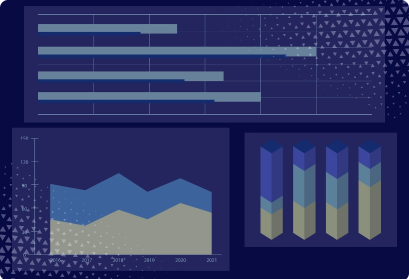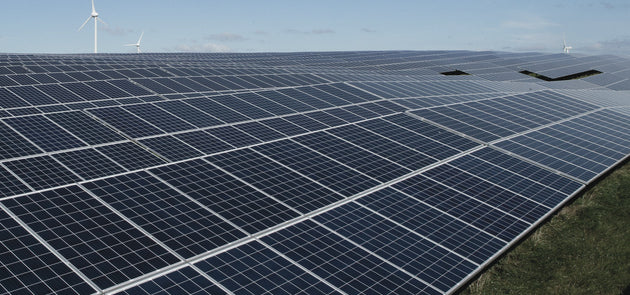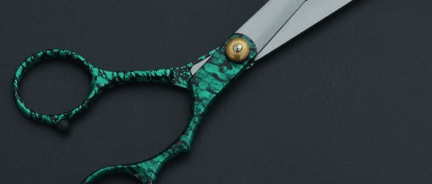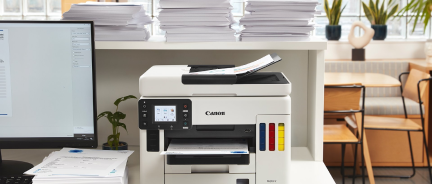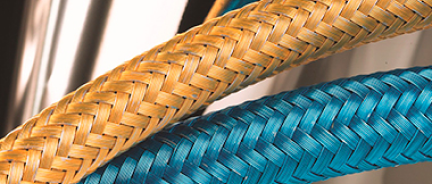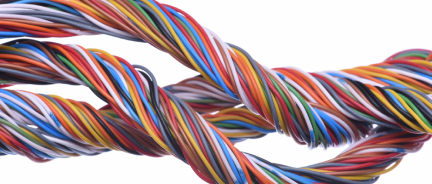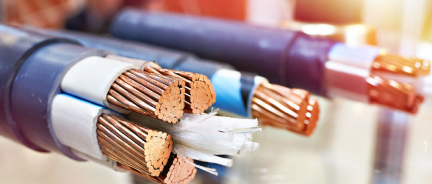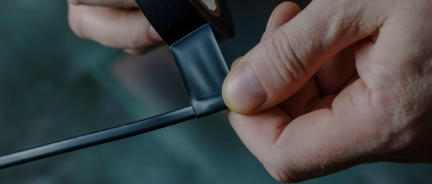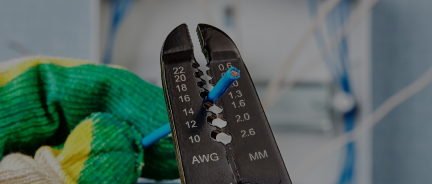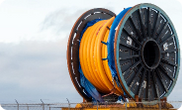Explicación del artículo 230 del NEC sobre conductores de entrada de servicio
El artículo 230 del Código Eléctrico Nacional (NEC) explica la instalación de conductores de servicio y equipos de servicio que llevan energía eléctrica desde la red de suministro eléctrico a un edificio o estructura.
El alcance del artículo incluye los requisitos eléctricos relacionados con:
-
Conductores de servicio aéreos y subterráneos
-
Tipos, tamaños y protección de conductores de entrada de servicio
-
Ubicaciones y agrupaciones de desconexión del servicio
-
Protección contra sobrecorriente en el punto de entrada
-
Desconexiones de emergencia para viviendas residenciales
A continuación se muestra una descripción general completa de las reglas más importantes y las consideraciones de cables del mundo real que se encuentran en el Artículo 230 del NEC:

Requisitos generales
El NEC 230.2 limita los edificios a un solo servicio, pero se pueden permitir múltiples servicios bajo condiciones específicas. Por ejemplo:
-
Grandes edificios comerciales o industriales que tienen múltiples ocupaciones (como un centro comercial o un almacén con varios inquilinos)
-
Edificios con cortafuegos que dividen la estructura en áreas de incendio separadas
-
Instalaciones donde se necesitan diferentes sistemas de voltaje para funciones separadas (por ejemplo, 208Y/120V y 480Y/277V)
En estos casos, cada servicio deberá estar justificado y marcado por separado, y cumplir las normas de espaciado y agrupación establecidas por el NEC.
Conductores de servicio
Los conductores de servicio incluyen:
-
Bajadas de servicio aéreas instaladas por la empresa de servicios públicos
-
Las derivaciones de servicio subterráneas son donde la empresa de servicios públicos instala conductores subterráneos hasta el edificio.
-
Conductores de entrada de servicio, instalados por el cliente desde la base del medidor hasta el medio de desconexión del servicio
El artículo 230 del NEC regula todos ellos.
Tipo y clasificación del conductor
El tipo de cable utilizado para la entrada de servicio depende en gran medida de las condiciones de instalación:
-
El THHN/THWN-2 es una opción común para conductores de entrada de servicio instalados en conductos. Es apto para uso tanto en interiores como en exteriores con conductos como RMC, IMC, EMT o PVC. El THHN/THWN tiene una clasificación de temperatura de 90 °C en ambientes secos y 75 °C en ambientes húmedos. Es versátil y cuenta con amplias homologaciones.
-
El XHHW-2 es la mejor opción para entornos con alta humedad o fluctuaciones de temperatura, como instalaciones solares en tejados o en zonas costeras. Al igual que el THHN, debe instalarse en conducto, pero ofrece mayor resistencia a la humedad y estabilidad térmica, con una clasificación de 90 °C en entornos secos y húmedos.
-
Los cables SER y SEU son conductores específicos de entrada de acometida. Se utilizan en aplicaciones residenciales sobre el suelo para conectar el medidor al panel de acometida principal. Los cables SER incluyen conductores individuales para fase, neutro y tierra, mientras que los cables SEU combinan neutro y tierra. Estos cables no están permitidos en entornos subterráneos o húmedos y suelen instalarse en interiores o a lo largo de paredes exteriores en condiciones secas, dentro de conductos.
-
Los cables USE-2 y XLP se utilizan para derivaciones de servicio subterráneas. Están diseñados para enterramiento directo o uso en conductos y pueden soportar la exposición constante a la humedad. Sin embargo, a menos que tengan doble clasificación RHH o RHW-2, estos cables no pueden utilizarse en el interior de edificios. Para aplicaciones residenciales, las empresas de servicios públicos suelen utilizar cable URD , una configuración de conductores con clasificación USE-2 trenzados en conjuntos tríplex o cuádruplex para un suministro eléctrico subterráneo eficiente. Los cables URD son prácticos porque están preensamblados para alimentación monofásica.
-
Todos los tipos de conductores deben estar marcados y listados para su uso en la entrada de servicio.
Como regla general para los cables utilizados para la entrada de servicio:
-
Utilice THHN/XHHW-2 para entradas de servicio aéreas o interiores en conductos.
-
Utilice el cable SER para el servicio residencial sobre el suelo (del panel al medidor).
-
Utilice USE-2 o URD para servicio lateral subterráneo (enterramiento directo o en conducto).
-
Siempre dimensione los conductores de aluminio uno o más niveles más arriba en comparación con el cobre para la misma capacidad de corriente.
Tamaño del conductor
La capacidad de corriente máxima del conductor debe calcularse según el NEC 310.16 o NEC 310.12 (para viviendas), con ajustes según la temperatura ambiente y el relleno del conducto. El dimensionamiento se basa en la carga conectada, calculada según el Artículo 220 del NEC.
Para viviendas residenciales de 100 a 400 amperios, la norma NEC 310.12 permite un dimensionamiento reducido debido a la diversidad de cargas típicas; por ejemplo, cobre de 1/0 AWG o aluminio de 4/0 AWG para un servicio de 200 A. Para unidades no residenciales, se aplican las tablas de capacidad de corriente estándar de la norma NEC 310.16.
NEC 310.12 – Servicios de vivienda (100–400 A)
|
Amperaje de servicio |
Tamaño del conductor de cobre |
Tamaño de aluminio/Al revestido de cobre |
|
100A |
#4 AWG |
#2 AWG |
|
125A |
#2 AWG |
1/0 AWG |
|
150A |
1 AWG |
2/0 AWG |
|
200A |
1/0 AWG |
4/0 AWG |
|
225A |
2/0 AWG |
250 kcmil |
|
250A |
3/0 AWG |
300 kcmil |
|
300A |
350 kcmil |
400 kcmil |
|
400A |
500 kcmil |
700 kcmil |
NEC 310.16 – Aplicaciones generales (columna de 75 °C)
|
Amperaje de servicio |
Tamaño del conductor de cobre |
Tamaño del conductor de aluminio |
|
100A |
#4 AWG |
#2 AWG |
|
125A |
#2 AWG |
1/0 AWG |
|
150A |
1 AWG |
2/0 AWG |
|
200A |
2/0 AWG |
4/0 AWG |
|
225A |
3/0 AWG |
250 kcmil |
|
250A |
4/0 AWG |
300 kcmil |
|
300A |
250 kcmil |
350 kcmil |
|
400A |
350 kcmil |
500 kcmil |
Al usar aluminio, los conductores deben ser de mayor tamaño que los de cobre debido a su menor conductividad. El aluminio también requiere una pasta antioxidante en las terminaciones y terminales aptas para este tipo de aluminio. Se usa comúnmente en derivaciones subterráneas (p. ej., cable URD) para ahorrar costos de enterramiento directo.
Enrutamiento de conductores
Debido a que los conductores de entrada de servicio no están protegidos hasta la desconexión principal, NEC requiere que se enruten para minimizar la exposición y el daño físico.
Deben instalarse en conductos metálicos rígidos (RMC) o conductos metálicos intermedios (IMC) donde queden expuestos.
-
El RMC es más grueso y se utiliza en áreas propensas a daños mecánicos, como mástiles de servicio al aire libre o patios comerciales.
-
El IMC es más ligero pero sigue siendo adecuado para paredes interiores o tramos protegidos.
-
El PVC Schedule 80 se puede utilizar en áreas sujetas a impactos leves (por ejemplo, enrutamiento de garajes) o en tuberías ascendentes subterráneas.
Para las conexiones de servicio subterráneas, el cable USE-2 o URD se entierra directamente (normalmente a 60 cm de profundidad) o se instala en un conducto (al menos 45 cm de profundidad cuando está protegido). Los cables SE no están permitidos bajo tierra.
Equipo de servicio
El equipo de servicio incluye los medios de desconexión principales, la caja de medición y cualquier conexión a tierra y unión asociada. Este equipo debe estar homologado, montado de forma segura y claramente marcado. Debe contener todos los conductores de entrada de la acometida y proporcionar un acceso seguro y rápido para mantenimiento o parada de emergencia.
Desconectar significa
Según NEC 230.70:
-
Se debe proporcionar un medio para desconectar todos los conductores no conectados a tierra.
-
Debe estar ubicado fuera o inmediatamente dentro del edificio en el punto de entrada.
-
Debe ser fácilmente accesible sin herramientas y estar claramente etiquetado.
Protección contra sobrecorriente
-
La norma NEC 230.91 exige que la protección contra sobrecorriente se instale en el seccionador de la acometida principal, no en línea con los conductores de entrada de la acometida. Estos conductores sin protección deben ser cortos, rectos y estar protegidos físicamente.
-
El dispositivo de protección contra sobrecorriente (OCPD) debe estar clasificado para manejar la corriente de falla disponible en caso de cortocircuito o sobrecarga.
Número máximo de desconexiones
NEC 230.71(A) permite:
-
Hasta seis desconexiones de servicio por entrada de servicio, siempre que estén agrupadas en una ubicación.
-
Un solo panel de interruptores principal es estándar para aplicaciones residenciales.
A partir del NEC 2023, generalmente se requiere que las nuevas instalaciones utilicen una sola desconexión para mejorar la coordinación y la simplicidad.
Desconexiones de emergencia
El NEC 230.85 exige un interruptor de emergencia claramente identificado para todas las viviendas unifamiliares y bifamiliares. Este interruptor debe estar ubicado en el exterior del edificio, claramente identificado como "PARADA DE EMERGENCIA" y ser fácilmente accesible para el personal de emergencias en caso de incendio o desastre.
Marcado e identificación
Todos los conductores deben estar debidamente identificados:
-
Los conductores neutros (conectados a tierra) deben ser blancos o grises (NEC 200.6)
-
Los conductores de puesta a tierra deben ser verdes o desnudos.
-
La reidentificación (por ejemplo, revestir un conductor negro para indicar que es neutro) solo está permitida según las pautas del NEC.
-
Las cubiertas de los cables deben mostrar la clasificación de voltaje, el tipo de conductor y la capacidad de corriente.


